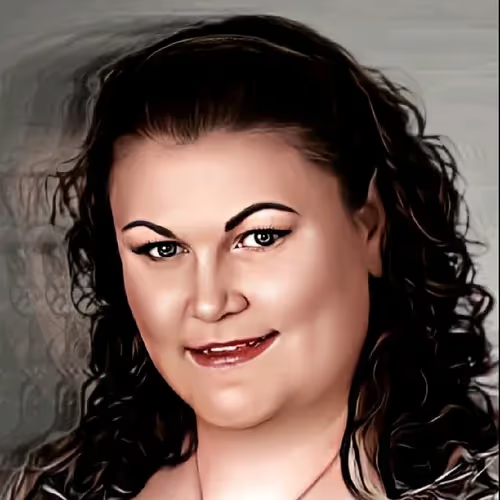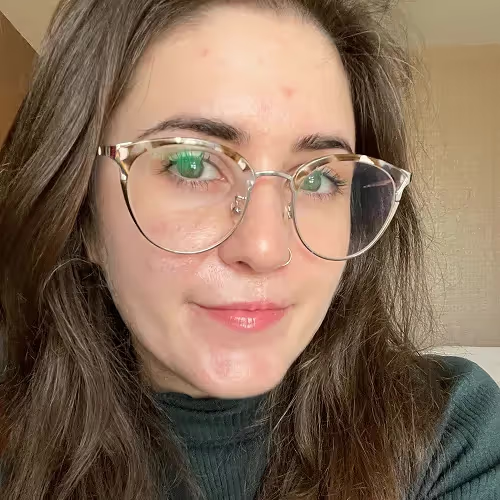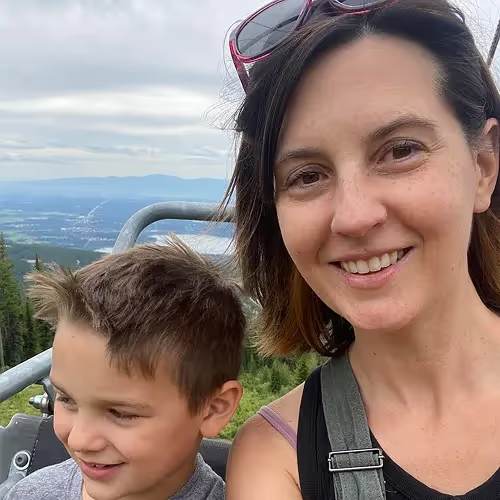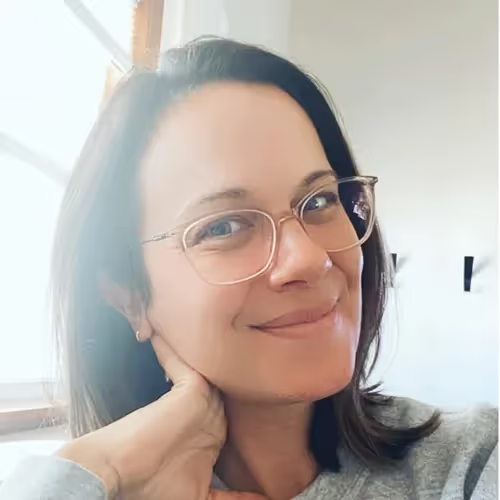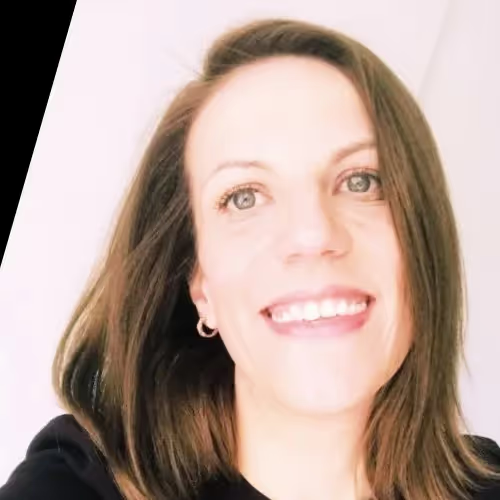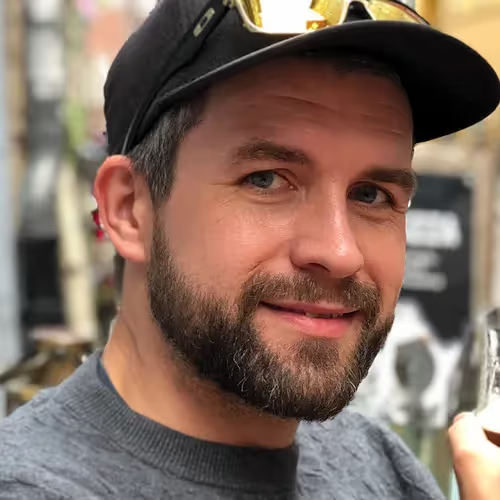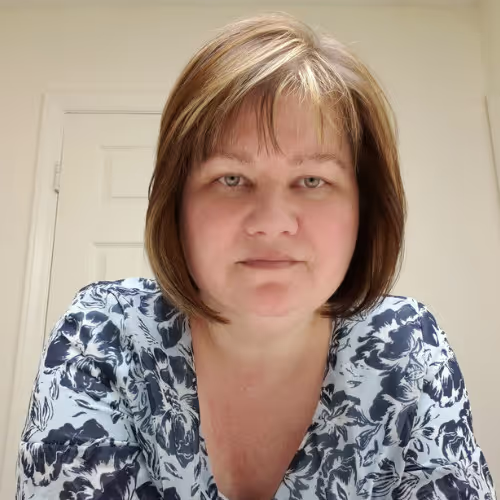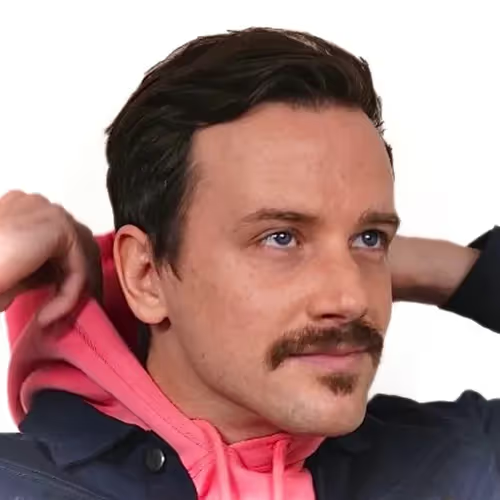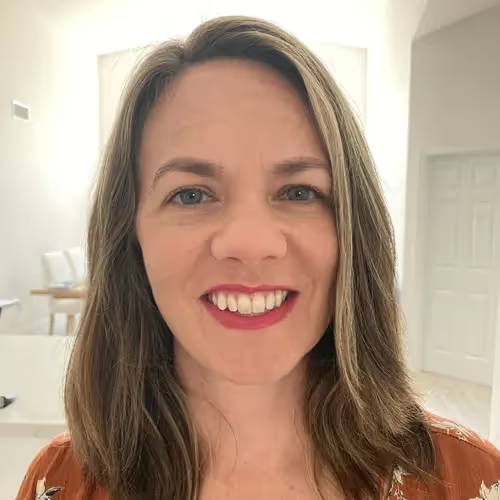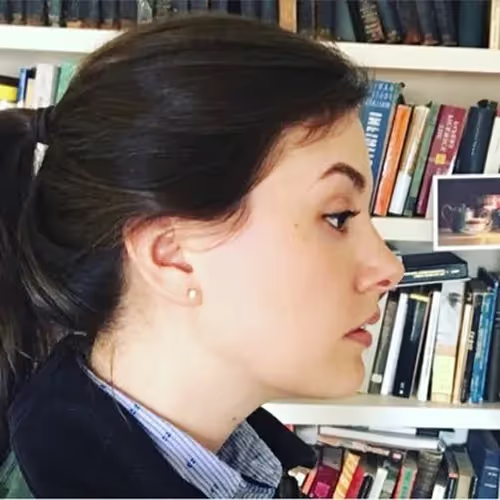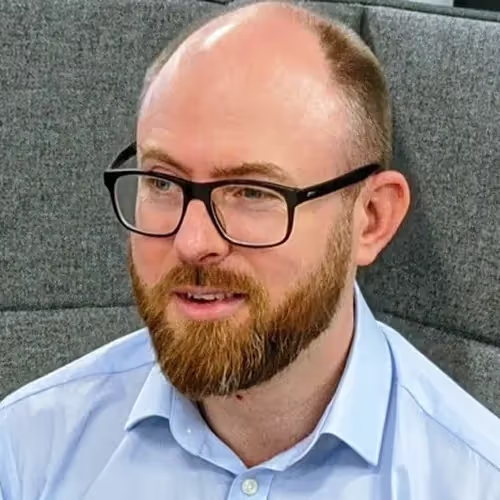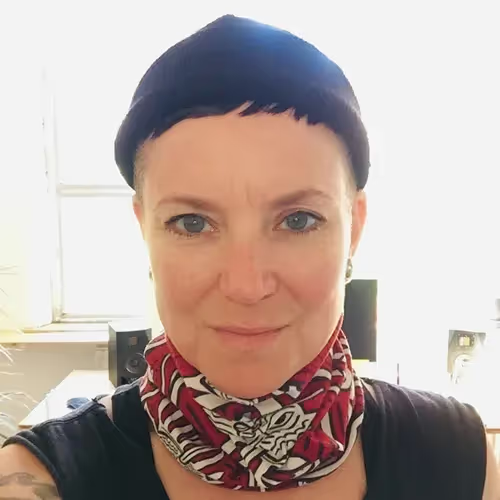Object Guide Strategies - ORCA Series #5
Yeti Stereo Microphone: [00:00:00]
What's up OOUXers! Welcome to step five of the ORCA process, Object Requirements. This is where we get into the object guide, which is like a glossary on steroids. And this is officially step five, but at sometime step two and sometimes it's step five and it's step two. Okay, I'm going to get back to [00:01:00] this reshuffle and just a few, we'll talk about that.
And we'll talk about moving the object guide up in the process. But here we are here. We are in the fifth installment of this solo series where I provide tips and tricks on each of the 15 steps in the ORCA process. And this ORCA process. Y'all this is the juiciest, the most rigorous, the most killer process for taking complexity and messy research.
And. Under defined or ill-defined or over defined stakeholder requirements. And all the headaches imaginable basically, and turning that shitstorm into a solid, intuitive structure. For not only supporting design, but also supporting information, architecture, work, supporting content strategy work, and definitely supporting development. And did I say intuitive? Supporting your end users. Making something that is going to make sense. Out of the box. Okay.
So today we're turning a [00:02:00] corner. We've already hit objects, relationship, CTAs, and attributes in the discovery round. So see the previous four episodes in this series and We're going to spin up a new landing page. So I will have a link for you in the show notes that you can see just those, uh, podcast, um, podcast, episodes.
I don't know what the URL is yet, but if you're just looking for those podcast episodes, I think now that we have the discovery round under our belt, that constitutes having its own landing page so that you can just see those. And we'll just. We'll just grow that out to all 15 of these episodes.
So if you're just dropping in, you might want to go back and listen to those first four episodes, but if you've already been, OOUXing for awhile, you can probably just drop right into this.
So, like I said, we are turning a corner. We are looping back to the "O" of ORCA. That's objects for our newcomers to start this infamous requirement's round. So why infamous? Well to [00:03:00] the growing community of certified strategists. And SPMCers those are the people in the self-paced masterclass. The people that are enrolled in that. Massive online course.
They have braved. Five hours of content in the masterclass. All right. And they know that this is the. Juiciest deepest. I will even say heaviest round of the process. It can be. So time-consuming that often teams that are in a hurry will actually even skip to the prioritization round and then loop back to requirements.
So I talk about this more in an article that I wrote called prioritizing prioritization. We will put the link in the show notes. Um, and there I talk about the pros and cons of this approach of doing this, this switcheroo, where we moved the prioritization round up and. Take a beat before we get into requirements,
But in a nutshell, I will always keep the requirements round.
Officially first. Because it is way more effective to prioritize [00:04:00] stuff that you fully understand. Especially your objects. So I just know, I just know that I, and you will save so much time in the long run. If you get this full picture of the requirements before you make a roadmap. All right, but often we're not in control of the schedule.
We're not in control of the roadmap and postponing, or even eliminating parts of the requirements around just often is a necessary evil. But if you can do it, do as much as you possibly can. Because the more you defined before you prioritize, the more informed your prioritization is going to be. And the activities that we have in relationship requirements, CTA requirements and attribute requirements. Those are so fricking important. Yet often they do need to be eliminated because it's just going to make sense based on the fact that we just move fast, we move fast to get into development, and then we do a bunch of rework, right.
And that is the nature of our business right now. And I'm not gonna pretend like I don't understand that. Okay. [00:05:00] Sometimes you just have to launch and then rework stuff, and that is not necessarily the best way to work, but that is where our industry is now. But. So definitely stuff in the, the R the C and the a of requirements can be eliminated. But y'all object requirements. The object guide do not skip this step. If anything, move pieces of this step up in the process. So when I do ORCA sprints for clients, where we run their stickiest problems through the ORCA process over the course of usually a week. I walk in the door with at least the beginnings of an object guide. For usually about 80 to 100 potential objects. Okay.
So as the team, so I come in and we've got this team of designers and stakeholders and developers and subject matter experts and often content folks, and even sales people, sometimes even users, we've got this amazing cross functional team together. And basically they're ending up doing a big card sort of objects to sort of [00:06:00] prioritize down. I've done my noun and foraging and my language foraging.
And I've actually built a little bit of an object guide for all of these objects so that they know what they're prioritizing because we're jumping right in and we've got to get to about 10 to 12 objects for this sprint, what we're going to spend the rest of the week on. Okay. So based on the goals and based on what the team is trying to accomplish, they need to figure out what the important objects are. Okay.
So I need them to know exactly what they are prioritizing. Okay, so let's back up. All right. I'm going to get more into ORCA sprints in a moment. Um, I am not, what am I doing this podcast? I am not going to go through all of the potential sections in an object guide that would just take way too long.
Um, If you want to go into that level of depth, I will invite you to enroll in the self-paced masterclass, OOUX.com/masterclass. There you can get the deep dive. You can get all the templates and you can get so much more help in creating [00:07:00] this 360 degree glossary that gives you and your team. Just ridiculous clarity onto your objects. And again, the objects, that's the bones of your system.
That is your competitive edge. All right. So getting really clear on what those are is. Critical for good product development. And good product design.
So, what I am going to talk about today is four things very briefly, I think very briefly. We'll see how many tangents I end up going on. My notes are kind of brief, but the four things that I'm going to talk to you about today, one,
we're going to go a little bit more into. Uh, how I do object requirements and build an object guide within the context of an ORCA sprint. Um, and if you don't know what an ORCA sprint is, I have podcast episodes on that and I will also link you to a collection as well in the show notes, all about ORCA sprints. Um, I'll give a little bit of a brief overview and ORCA sprint, but we're not going to go into everything about what that is.
I'm going to be focusing today on how I do [00:08:00] object requirements within the work of sprint. Number two. I'm going to talk about customizing the ORCA sprint by project, and even by object being really flexible with it. Number three, I'm going to talk about including objects that might come up later. Like you already have your object guide and then additional objects come up.
Usually these are objects that have to do with hierarchy patterns, or inheritance, like object basis and junction objects. Do you put those into your object guide? Do you back up and put those back in? We'll talk about that. And number four, I'm going to talk about. Artificial intelligence because we can't not talk about it, right?
Especially, oh my gosh. Today, yesterday. Custom GPTs. What the hell is going on. Um, so we're going to talk about using artificial intelligence to help you in the process of creating an object guide. Okay. Let's get into it. Let's talk about the ORCA sprint.
Number 1: Object Requirements
Yeti Stereo Microphone: So first let's talk about using object requirements, leveraging the techniques of object [00:09:00] requirements while running an ORCA sprint.
So an ORCA sprint usually is about a week and the first day is all about objects. Second day. It's about relationships. Third day's about CTS. Last day is about attributes. And then we do a bunch of documentation and sometimes we mix it up. All right. So it is a very flexible process, but that is generally what is happening. Um, so the first day all about objects. But I will usually do about 20 hours. Of prep work before getting in the door.
So what I'll do is I'm taken. All of the fodder from my client. Like, just give me, give me the Dropbox folder. Give me all this stuff. Get me your, your, uh, your keynote decks from your. In your PowerPoints and give me your, um, give me your existing system. Of course, if that exists, give me your user interviews.
Give me your chat logs. Give me everything. Give me everything you got. So then we go through our noun foraging, go back to that first episode in this series to learn more about now in [00:10:00] foraging and language forging, go through that to get to what I think. Are likely the strongest objects in the system. And usually this is like, 80 to a hundred plus like, usually this is in the triple digits of objects, especially because I work with. Um, the companies that I work for a highly complex companies are the ones that bring me in.
So usually they do have in the hundreds of objects that are in their ecosystem. And I also look at the goals, like, what are we actually trying to accomplish here? And even after narrowing that down, usually I'm, I'm like, It could be any of these. 80 ish to a hundred objects. So I come in the door with object cards.
Okay. They're printed out. And in those object cards, there's the name? The label of the, what I think this thing is called. And then I usually have. At least. A brief definition.
Some example, instances or even some example [00:11:00] types. So getting to level of specificity. Okay. So if the object is, let's say the object is. Appointment. Okay. This was a very high ticket object, um, in. With our Memorial care project. I will have a brief definition of appointment. Um, and I might even. That brief definition is usually going to be referencing other objects. So this is a booking for a visit.
All right. So I'm going to actually start getting into the different, the difference between a appointment and a visit. And might give some examples. So if it is. Doctor, I will actually give some doctors that are within the Memorial care system. All right. So I will give some real doctors, um, and put their actual names on there. And then if it's something like condition. I might even put some types in there.
So, um, so actually this might be, um, Hey, a chronic condition versus acute condition. Um, a condition that is a, [00:12:00] uh, life-threatening versus not life-threatening. I forget what the name of it is, but there's like conditions that are not necessarily a bad thing. Like pregnancy is considered a condition.
Right. Um, so that's not a disease, right? So there's like disease based conditions versus other kinds of conditions. So I might put something there to kind of like give the idea of level of specificity of what we're talking about. So I'm giving something. I will also sometimes give a little picture like an emoji or an icon that kind of helps give a visual representation.
This is nothing that's officially in the object. And I, but that is really nice to have, especially early on to have some sort of symbol for that object. Okay. So I come in the door with that. And then the prioritization zoos, we break up into groups. Each group is trying to figure out like, what, what do they think the. Ten-ish objects are going to be that we're going to take through the entire week. And I get them to edit any definitions that I've created.
Write your own definition. Does this definition not seem right to you? Or [00:13:00] if I didn't have a definition, I just had instances. Um, or just some types in there then can you write a definition for this or I'm going around? And I might even say like, Ooh, you picked that object. That's really interesting.
I am not 100% sure about that definition. That is one that like, I would really love if you all write me a new definition for that. So there is some judging along of the group and some editing of those definitions and of those, um, Of any of the instances too. So those are the things that are so important.
So even if you have very little time, make sure you have a definition written, make sure you have example instances. And even types. This is kind of a new thing. That I've been. Becoming a little bit obsessed with, of defining a few types of the thing, or even like high level categories. Um, just to really hone in until into level of specificity that we're talking about here. Um, So if you have questions about level of specificity, all right.
I feel like some of you were like, what are you talking about, [00:14:00] Sophia? I feel like I could go, go on it. Total tangent with that, but that's not what this podcast is about. Or if you have questions about anything I'm talking about on any of these podcasts. forum.OOUX.com. It is totally free to join.
Come join us there. Come nerd out. I do monthly free Q&A. You put your question in and I will talk more about your specific question. Um, and I even do some diagramming and some screen-sharing. It's just a lot of fun. So come on over and you'll see the monthly Q&A space there. And you'll see the whole schedule for when the next monthly, Q&A is.
And you can put your question in there. Okay. Somebody asked me about level of specificity, please. I want to talk more about it. Okay. So that's what I do during an ORCA sprint. I come in already with some definition, a little bit like a, like a skeleton object guide and it's different for every object.
Like I was saying, like one object is like, Ooh, we need a definition for this, this one. Just, just, I don't need to define doctor. All right. But having some good example instances. [00:15:00] It's going to be really helpful so they can get a picture in their head. So it depends on the object on what level of definition I am bringing to the table.
And then by the end of the day, before we get into the nested object matrix, Whatever objects we have decided on. I want to have definitions. Instances, probably some types, maybe even an updated, Little icon or something like that. We might, even if we have time do purpose statements, too, those are also really good to have in, or at least have a discussion around those. Really good to start honing in on the objects that are going to make the business money. Which objects are revenue generating directly versus indirectly.
So even if it's not full-out purpose statements, You're going through and you're saying, okay, which of these objects are revenue generating? And also from a user perspective, which of these objects are competitive edge. Which of these objects? [00:16:00] Do the competitors not handle really well or not even having their system? Okay.
So also, usually in that. The work that I do before I even start the ORCA sprint, I'm doing a little bit of competitive analysis, too. So that might be a bit of a discussion too. So the end of the day on Monday, usually it's a Monday. Of the ORCA sprint. I have got really good definition. I have a good idea of what these objects are so that I can facilitate the rest of the week. And the entire team has a really good idea of what these things are. Okay. Alright really important, especially when we get into the complexity of the nested object matrix.
And when we start mapping out all of these relationships,
Number 2: Customizing the Object Guide
Yeti Stereo Microphone: Okay. So. Number two. Customize we've already just talked about this, how I'm customizing the object guide object by object. Okay. Now even not just an ORCA sprint, but when you have your official documentation. Okay. The overarching thing to take away for the object [00:17:00] guide and for everything in the ORCA process. Do what is useful, do not let your sense and need for completion create a bunch of busy work for you.
Okay. I have to fight this. I'm like, oh, there's a section for success criteria. I better fill it out for all 15 of my objects. No, no, no. Just fill out success criteria for those revenue generating objects. Right. I mean, do it for all of them, if it's a good exercise, but again, do what's useful.
So if you start writing a statement and you're like this doesn't, this isn't really helping me. It's going to help you more for one object versus another object, or it might just depend on the project. So for SEO strategy, that's a section that we have as a, as kind of an optional section. Talk about the SEO strategy for each of the objects. That might, that's not going to make sense for, for example, Autodesk.
So working with the, when I was doing this with Autodesk, All their objects are basically behind an authentication and behind a paywall. Like we don't, we're not worried about that. [00:18:00] We're not designing. We weren't worried about like the marketing site for Autodesk. We were thinking about the software. Okay.
So SEO strategy was completely irrelevant, but something for like Memorial care for certain objects, SEO strategy might be really great, like locations or departments. Or even doctors SEO strategy, because those are public profiles. So we might really want to think about the SEO strategy. Okay. While for the latter day saints, the church of latter day saints. Oh, my goodness, almost all of their objects that we were working on were going to be really great for SEO strategy.
They're trying to get people to the website and most of the objects that we were working with. We're not behind and authentication for a paywall. Okay. That was the point of the website is bringing people into their church. So SEO strategy would be huge to having the object guide and probably for every single object, it should be explored. So come back to do what is useful.
Okay. Don't create an outline of your object guide on please. Don't just take our [00:19:00] template and say, I've got to fill this all out. All right. Use your critical thinking. Think about what the situation is, what the context, how much time you have. Okay. And do what is useful. Do not let any part of this process create busy work for you. There's a lot. There's a lot and it is incredibly rigorous. And trust yourself on what is going to be the most useful, but I will also say, be open to what is going to be useful. All right.
Be open-minded about it. Because. You might say, oh, we don't need to do that. We don't need to figure out, we don't need to think about success criteria. And then you start it and you're like, oh my goodness. Oh, wow. Some really interesting stuff is starting to come up. So it's almost like. Do what's useful at trust your instincts, but also test and push a little bit. And start it and be like, am I getting somewhere?
Or am I like, wow, I have no idea what the answer to this is. That is actually showing that I have an assumption. I have no idea what the success criteria. For this revenue [00:20:00] generating object is. Maybe I should go have a discussion about that. So it can actually help, um, elucidate some blind spots as well.
Number 3: Including Objects that might come up later in the process
Yeti Stereo Microphone: All right. So number three. Including objects that might come up later, later, I'm using air quotes later in the process. So if you're a beginner, let's say you're just going through the masterclass.
Okay. You're a beginner. And the way that we teach this, we teach inheritance and all these hierarchy patterns during relationship requirements. So if you're doing object requirements, you haven't gotten to relationship requirements yet. So we teach it there, but then I encourage you to, as soon as you start seeing these more complicated, advanced. Objects. You're going to start spotting them sooner and sooner.
So it's not like you, you don't wait. Like, if you see a tree system or a junction object, you're not like, oh, I'm not going to tackle that until I get to relationship requirements. No, as soon as you identify it, you want to grab those objects. Okay. You want to build out that tree system. You want to think about your junction objects.
You want to think about [00:21:00] object basis and local objects. All right. As soon as possible, we just teach it during relationship requirements, because teaching it during relationship discovery. Would be way too much too soon. Okay. So we teach it at that point, but as this is part of the sign that you're sort of an expert.
Ooh, XR. Is, you are spotting these things sooner and sooner and sooner. So you're spotting them while you're now in foraging. You're like, ah, okay, that's a tree system right there. That's a junction object. Ooh. We probably need a little local object there. So you're spotting them sooner and sooner.
But as a beginner, these objects might be coming up later in the process. All right. You might be deep into attributes and you might be deep in attribute requirements where you start realizing, oh, this attribute doesn't really fit on this object. Are these six attributes don't fit very well in this object and I need roll-ups and I need, uh, I basically need another object to house these attributes, and then we have these two objects that are very [00:22:00] closely related.
Okay. So if you're known, have no idea what I'm talking about. Please go over to medium again, we'll put the, we'll put the links and, um, So re there's an article that I have on junction objects. There's an article that I also have on tree systems. And then of course I talk about this so much more in the masterclass. Okay.
So when they do come up. Yes, the answer is yes. Go back to your object guide. So even if you've already written an object guide and then a branch or root. Um, or fruit of a tree system pops up and you say this one object actually needs to be three objects, or you realize a junction object that you didn't realize before. Um, Some people say to junction objects belong in the object guide to object basis belong in the object guide. Yes, they do, especially if it's useful to analyze these.
Um, sometimes people think that, oh, a junction object is like smaller than its parent objects. Often junction objects are the meat. They are like, they're one of the most important objects in a system. So even [00:23:00] if you recognize them later on in the process, that doesn't mean they're not important and they're, it doesn't mean that they don't deserve this level of scrutiny.
So yes, definitely as they come up. Go back and put them in your object guide you. This is, this is not a linear process. We say, oh, it's 15 steps 1, 2, 3, but no, no, no, no. We are bopping. That is, that is another sign of an advanced OOUXer as I'm working with my, uh, building this curriculum for advanced OOUX, like the main theme is being really flexible about it.
And you have all these pieces and just knowing like, Ooh, like I need to grab something from the future, or I need to pop back to a. activity that I was doing in the quote unquote past, like we're doing kind of all of it at once in a loosely linear pattern, but there's a lot of looping back.
Artificial Intelligence
Yeti Stereo Microphone: Okay. The last thing that I want to talk to you about is. Artificial intelligence.
I don't know why I feel like I need to sing it, but that's, what's coming out right now. Um, because maybe it's because it makes me [00:24:00] feel a little uncomfortable. Right. So I'm lightening it lightening the. The fact that I will soon probably be creating a Sophia replicant.
24:04
Yeti Stereo Microphone: So, um, if you don't know already there, Chat GPT has introduced the idea of custom GPTs, which I am. Actually like a little mad at myself for not seeing this coming. Like of course we would be able to do this. So, um, Shout out to Jake Zukowski he's already shared with me something that he created. He all he fed.
It was the free launch guide. Which you can get OOUX.com/resources/launchguide, I think is the link. So he fed at that free launch guide. And it is already helping him build out object maps. It's pretty crazy. Um, and then I'll give a shout out to Jim Knox and the OOUX forum. We were talking about it in the water cooler over there.
He's gotten a custom GPT to reverse engineer screenshots. So taking screenshots and it creates an object [00:25:00] map-ish. Um, so this is coming soon. Is it pretty much inevitable that I will be putting. All of my material into a custom GPT. I'm talking these podcast scripts. I'm talking. All the video transcripts, I'm talking all the newsletters.
I'm going to put it all into a GPT. All right. So that is coming soon. So soon maybe you'll be able to just. Put an object map. Into the AI and be like, write an object guide for me. And then it'll give you at least a draft that then you will go and edit. Of course, all right.
Being responsible users of artificial intelligence, we're always going to go back and edit and validate whatever gets spit out. Right. It might give you a really good draft. But for right now, it's all about the prompts. Okay. How are we going to prompt the AI to help us out with them, these sections? And then of course reviewing it.
So, let me give you some prompts that I did for the, uh, the church of latter day saints. When I was working with them. So one of the first [00:26:00] questions that I asked is it was just really open-ended. I said, what is the structure of the church of latter day saints that gave me some really good stuff. Um, just very, very general.
So, but as far as the object guide is concerned, I ask questions like do LDS members use the term ward or branch more? So just, I was feeling like there was some interchangeable words there, so I got a really good kind of take on that.
So asking for definitions, what is a calling in the LDS church? So, see what I'm doing is I'm not just saying, I'm not just asking. Chat GPT, what is it calling? Because I need to give that context of this domain. All right. So what is it calling in this very specific domain or what is an event in this very specific domain?
Okay. So make sure to be clear about what the domain is. We're when we're writing our definitions, we're not writing definitions for like that you would get into Webster's dictionary. I did feel like I should have mentioned that before these definitions are not definitions that are [00:27:00] out of context of the domain, they're very specifically contextual to the domain. And even the system that you're designing. Another, some kind of questions that I would ask often is also what is the difference between these things?
So if things are feel very, very related, I'll say, what is the difference between X and Y? Within context of this domain. I'm also getting instances too. So what are the articles of faith in LDS? And it actually gave me the 13 instances. There's only 13, I think, 13 instances of articles of faith, and it just listed them out for me.
So I could have article of faith as an object. And then I could give three to, for example, instances to really show this is what we're talking about. When we're talking about articles of faith. Okay, so coming soon more on AI for writing your object guide for you. Um, That might be a thing that we'll be offering soon.
Definitely we'll be offering the Sophia bot soon. So stay tuned for that. We'll be probably be talking about that. On the podcast in the [00:28:00] future and also in the newsletter OOUX.com/newsletter. That's another way to make sure to get that. That OOUX Launch Guide and then get any updates on potentially a really cool offering of, a OOUX AI that you can just ask anything to. So that's coming.
All right. So hopefully this helps give you a better idea on what object requirements is all about, and it gives you, gives you some strategies for. Really using the object guide and using the object guide very, intelligently. So happy OOUXing and I'll talk to you next time.
























































